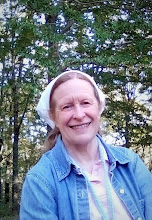The Australian: Heads and tails being put in a spin by tossers at the mint [November 22, 2004]
This story is a few months old, but with all the fuss about Wisconsin quarters - how many coins have you scrutinized in the hopes of finding an extra leaf? - I couldn't resist. The full article, of course, would be worth a read, but here's some of the fun. The columnist is Imre Salusinszky.
...Every morning, a colleague and I toss a coin to determine how key elements of the day's work will be distributed. It's simple, fair and efficient. Plus it's the only thing standing between us and a descent into a state of bloodthirsty anarchy that would make Lord of the Flies look like one of the William books. But far too often of late, we've been stymied.
To put the matter plainly, there appears to be a virus of two-headed coins – or, to be numismatically correct, of coins with heads on both the obverse and the reverse. Because of the watering-down of so-called circulating coins by so-called commemorative coins, you are increasingly likely to find the head of a Sir Charles Kingsford Smith or a Lord Howard Florey or a Henry Parkes on the reverse – the non-Queen Elizabeth II side – of your $1 coin. The state of affairs with the other denominations used for commemorative designs – the 20 cent coin and the dodecagonal 50 cent piece – is equally dire. Indeed, feature this: the 1998 Bass and Flinders anniversary 50 cent coin is a three-headed coin. It shows George Bass and Matthew Flinders on the reverse and Her Maj on the obverse....
...While the first function of money is certainly to provide the economy with a medium of exchange, the second is to be tossable, to allow both wagering and the convenient extinguishment of indecision....
Incident at Hawk’s Hill by Allan W. Eckert
-
Benjamin MacDonald is the six year old younger son of William and Esther
MacDonald. The year is 1870, and the place is somewhere to the north of
Winnipeg, ...
3 days ago

No comments:
Post a Comment